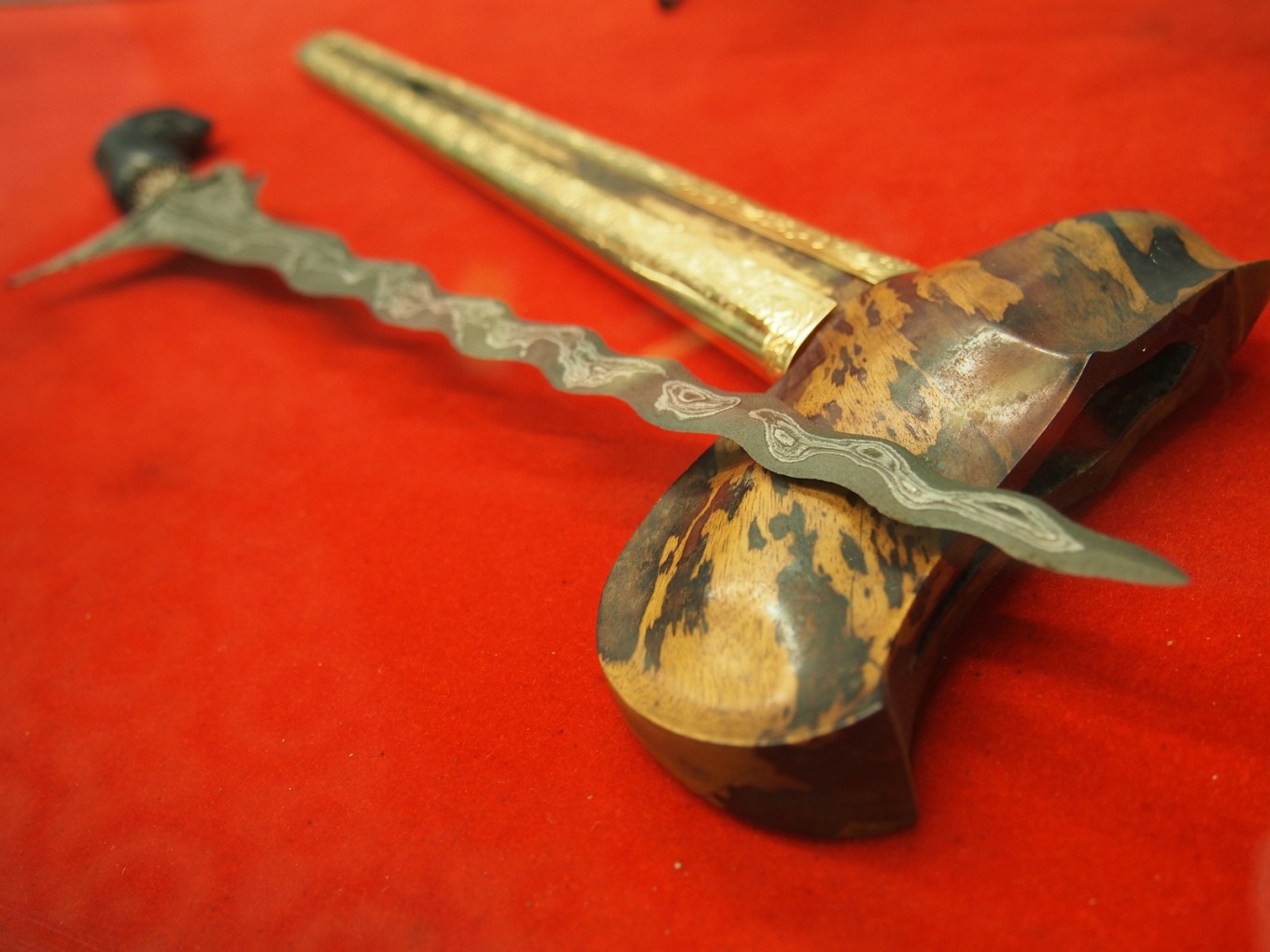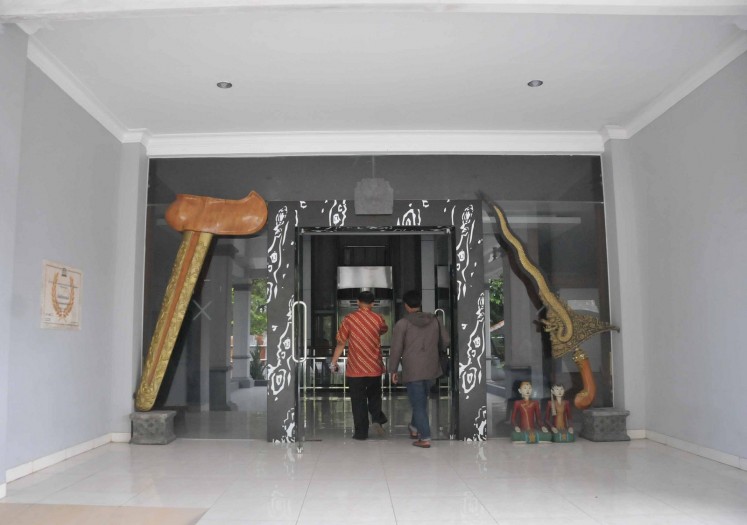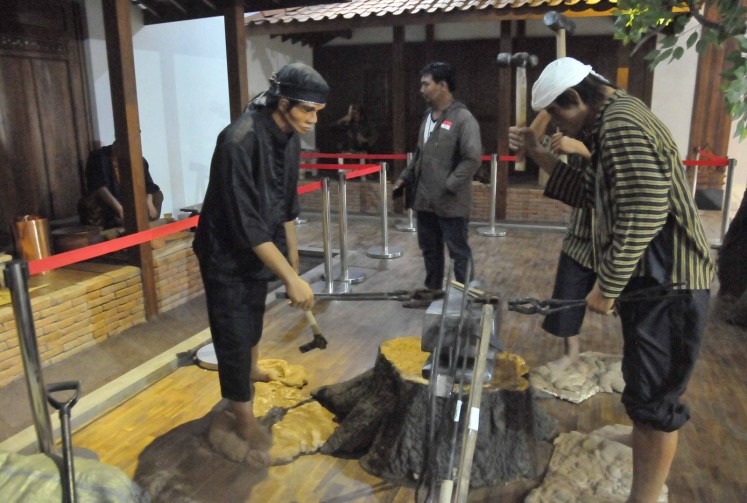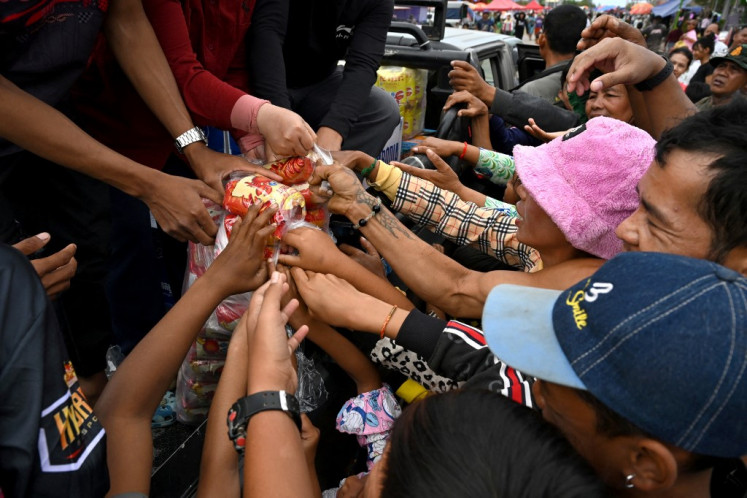Popular Reads
Top Results
Can't find what you're looking for?
View all search resultsPopular Reads
Top Results
Can't find what you're looking for?
View all search resultsSurakarta's Keris Museum puts hundreds of ancient keris on display
Change text size
Gift Premium Articles
to Anyone
T
he Keris Museum in Surakarta, Central Java, will be inaugurated by President Joko “Jokowi” Widodo on Aug. 25. The Surakarta administration is continuing to work on perfecting the arrangements of each collection in the museum, involving curators and museum observers in the process.
There will be roughly 360 ancient keris (ceremonial Javanese dagger) on display at the museum, all of which were donated by a number of collectors as well as the community of keris enthusiasts. However, the Keris Museum has the capacity to hold and display 4000 different keris. Moreover, other than keris, on display will also be other tosan aji (traditional weapons made of metal), including tombak (spears) and badik (traditional knives from South Sulawesi).
Of the hundreds of keris on display, some are keris lurus, keris luk (curved on the right and left side) seven, keris luk 11 and keris luk 13. These keris have a variety of different pamor (motifs), such as beras wutah (accidental pamor formed from forging, in the shape of a connecting navel) and sekar pakis (in the shape of fern flowers).
The majority of the keris on display come from Java. However, a small number of items originating from areas outside Java, including rencong (traditional Acehnese dagger) from Aceh, mandau (dagger) from Kalimantan and different types of keris from Madura, Bali as well as Sulawesi, will also be on exhibit.
Read also: Indonesian batik heritage on display in Surakarta batik museum
A total of 300 of the ancient keris come from the Majapahit (1293-1500), Demak (1475-1554), Pajang (1568-1587), Kartasura (1680-1742) and Surakarta (1745-1946) periods, and as such they hold significant historical value. At this time, the oldest keris in the collection originates from the Majapahit Kingdom era in the 15th century.
“There are many things that must be taken into account in regards to the selection of these keris. We can’t just display them arbitrarily,” said Bambang Tuko Wibowo, one of the curators of the Keris Museum.
Bambang added that within the process of curating these different pieces for the collection, it was very important to know the characteristics of the keris. Good curation depends on understanding the quality, type, age, production, materials and many other important details about the artifact.
“Museums are attractions that are educational at the same time. Visitors not only see the keris, but they also receive detailed information about each item they see on display,” he said.
The Keris Museum has been under construction since 2013, with Rp 25 billion (US$1.88 million) from the state budget (APBN) as well as Rp 1.5 billion from the city budget. In addition to the showroom, the five-storey building located in the Sriwedari complex is also equipped with an audio-visual room, a diorama of the keris-making process, as well as a storyline. Construction of the building was completed in late 2016.
Nevertheless, the inauguration has been postponed three times because of a number of improvements and renovations that have had to be made. Finally, the administration confirmed the inauguration of the building would be done by Jokowi this coming August.
Read also: Explore a different side of Indonesia in these museums
“The inauguration is scheduled to coincide with the implementation of the National Jaboree [Jamnas] of the Mental Revolution Movement in Surakarta on Aug. 25-27. Jamnas is followed by all regional heads throughout Indonesia,” said Surakarta Cultural Agency head Sis Ismiyati.
Meanwhile, Solo Museum technical management unit (UPT) head, Bambang MBS, explained that visitors would be charged an entrance fee of Rp 6,000 per person. However, the fee would only be applicable one month after the initial opening of the museum.
“After the inauguration [entry to the museum] will be free for roughly a month, afterwards we will begin to charge an entrance fee. We have also prepared six tour guides,” Bambang explains.
At the same time, Surakarta Mayor FX Hadi “Rudy” Rudyanto revealed that the municipal administration of Surakarta was still trying to convince the central government to donate the keris that had been returned by the Dutch government to Indonesian, to the Keris Museum.
“When they have been returned, we will file an official letter to the central government. The administration would like to look after the keris collection as part of the Keris Museum,” said Rudy. (tha/kes)













